Featured Articles
The Tale of Gatti-Ward Has An Untold Rest of the Story
Paul Harvey, the iconic radio announcer who was 90 when he passed away in February 2009, wasn’t into merely repeating to his listeners what they already knew, or thought they knew. Harvey understood there was always something in every breaking-news bulletin that wasn’t so much at the forefront of the discussion as on the back burner. It was there, behind that curtain, where he felt it was his duty to take those listeners.
“You know what the news is,” he would say in that familiar chirpy voice, rife with his signature dramatic pauses. “In a minute you’re going to hear … the rest of the story.”
HBO Sports, which hauled in a load of awards with its 12-episode boxing documentary series, Legendary Nights, in 2002, is heading back into its comfort zone on Oct. 19 with the premiere of the first of several new Legendary Nights, “The Tale of Gatti-Ward,” which chronicles the epic trilogy that pitted blood-and-guts brawlers Arturo Gatti and “Irish” Micky Ward from April 18, 2002, to June 7, 2003. The first of several play dates comes at the witching hour of midnight, following the live telecast of the Mike Alvarado-Ruslan Provodnikov junior welterweight clash from Denver, Colo., which begins at 9:45 p.m.
The nine George Foster Peabody Awards and 33 Sports Emmys for documentaries racked up by HBO Sports, a number of which were won for work done on the 2003 Legendary Nights, are an indication that the pay-cable giant is back to doing something it has always done exceptionally well. And there is an undeniable sense that, in many ways, things are picking up right where they left off a decade ago, when “The Tale of Lewis-Tyson” ended the series run. The production again is high-level, the highlight clips exciting, the remembrances of those involved (Gatti died, far too soon, at 37 on July 11, 2009) compelling. Executive producer Rick Bernstein, an integral part of not only prior Legendary Nights but other award-winning HBO Sports documentaries, is back to helm “The Tale of Gatti-Ward,” providing the common thread that connects what was, what is and what will be.
But former HBO Sports president Ross Greenburg, the master of the sports documentary and driving force behind the 2002 Legendary Nights, is now performing similar duties at HBO’s increasingly bitter rival, Showtime. The narrator for “The Tale of Gatti-Ward” is Mark Wahlberg, who was nominated for a Best Actor Oscar for his role as Ward in 2010’s The Fighter, which didn’t deal with Ward’s career-defining bouts with Gatti but with his contentious relationship with his half-brother/trainer, the drug-addicted former boxer Dicky Ecklund. Wahlberg takes over for HBO Sports’ longtime narrator, Liev Schreiber, because Wahlberg is so obviously identified with Ward. But look for Schreiber, who has the title role in Showtime’s new drama series, Ray Donovan, to still be the voice of HBO Sports’ various reality series and other projects.
It’s impossible to fit a gallon of material into a quart bottle, and so it would have been difficult to wrap all those curious, behind-the-scenes developments around a three-act passion play that has been elevated to a special place in boxing history even though Gatti and Ward were fighters with as many flaws as strengths, Gatti’s June 9 induction into the International Boxing Hall of Fame notwithstanding. It is perhaps because their ring traits were so alike that Gatti and Ward were repeatedly able to make magic, even if neither attained greatness in the same talent-drenched manner as such past Legendary Nights subjects as Sugar Ray Leonard, Thomas Hearns, Aaron Pryor, Alexis Arguello, Marvelous Marvin Hagler, Julio Cesar Chavez, Meldrick Taylor, Evander Holyfield, Riddick Bowe, Lennox Lewis, Mike Tyson, Oscar De La Hoya, Felix Trinidad, George Foreman and Riddick Bowe. What Gatti and Ward might have lacked in natural ability they made up for with almost bottomless wells of want-to.
“In the last few rounds, Arturo and Micky looked like they had nothing left, but they kept digging deeper and deeper and found what it took to keep going,” HBO boxing analyst Larry Merchant said after their first slugfest, which the underdog Ward won on a 10-round split decision at the Mohegan Sun in Uncasville, Conn., a quote I fetched from my voluminous personal files and not from “The Tale of Gatti-Ward” preview DVD. “Whether it’s on the highest level of Arguello and Pryor, or Bowe and Holyfield, I can’t say. But I don’t know how anything could be more exciting.”
Round 9 of that fight is time-capsule-preservable quality, with Gatti going down from a crushing hook to the body, seemingly in deep trouble after beating the count, then rallying with a flurry of his own before Ward roared back to again regain the upper hand.
Blow-by-blow announcer Jim Lampley summed up that back-and-forth round thusly: “Every once in a while, someone will ask me, `What’s the greatest fight you’ve ever called?,’ or `What’s the greatest round you’ve ever called?,’ or `What’s the greatest thing you’ve ever seen in boxing?’” Lampley said, still amazed by what he witnessed 11-plus years earlier. “And the answer is, `Gatti-Ward I, Round 9.’ I think that will always be the answer.”
So we got it then, and we get it now. Something out of the ordinary unfolded in and out of the ring between Ward, the red-haired journeyman from Lowell, Mass., and Gatti, the Italian-born, Montreal-raised, Jersey City-based basher who used to be leading-man handsome until too many smacks to the face on too many fight nights had him resembling Quasimodo after some of his more punishing adventures in pugilism. And Ward willingly accepted as many lumps, abrasions and stitches from his future best friend as he dished out in those three wars of attrition.
“I didn’t mind taking the pain, taking the punches,” Ward said of a career that featured enough trips in ambulances that he conceivably could have qualified for frequent-rider status. “I didn’t mind the stitches, I didn’t mind getting cut.”
Said Gatti’s longtime manager, Pat Lynch: “Arturo always said, `My toughest fight is when I fight someone just like me.’ After that (first Ward) fight he said to me, `Guess what? I just fought someone just like me.’”
It could very well be that “The Tale of Gatti-Ward” represents the high-water mark for this updated round of Legendary Nights. HBO got into boxing business way back on Jan. 22, 1973,with its telecast of a young George Foreman wresting the heavyweight championship on a second-round technical knockout of Joe Frazier in Kingston, Jamaica, so Greenburg, Bernstein and Schreiber had a wealth of material from which to draw when the 2002 slate of Legendary Nights went into production. In the 11 years since … well, maybe the number of fight nights that could justifiably could be described as “legendary” are fewer and farther between, which is what happens when the really good, really interesting matchups are now more evenly parsed between HBO and Showtime, with each entity taking strict care to ignore the other when they aren’t publicly bickering like, say, the Kardashians and their husbands/boyfriends du jour. In other words, don’t expect “The Tale of Corrales-Castillo” or “The Tale of Mayweather-Alvarez” to turn up any time soon on HBO. To the suits at HBO headquarters in midtown Manhattan, it’s like those Showtime bouts never happened.
It’s here where Paul Harvey would jump in with “the rest of the story,” telling tales out of school about the cross-pollination that have those trying to keep up with the respective networks’ management affairs unable to tell the players without scorecards.
Not only do you have Greenburg, who was HBO Sports president from 2000 to 2011, now consulting for Showtime’s “All Access” advance peeks at Mayweather’s bouts with Robert Guerrero and Canelo Alvarez, and Schreiber carrying the load with Ray Donovan, but HBO replaced Greenburg with Ken Hershman, who had been executive vice president and general manager of Sports and Event Programming at Showtime. It’s like the Hatfields and McCoys of premium cable, replete with occasional cross-breeding. The feud figures to get even hotter moving forward; Showtime barely had half the number of HBO subscribers in 2005, but now, thanks in no small part to its increased involvement in big-time boxing, the gap has narrowed significantly, with HBO sitting at approximately 27.5 million subscribers to Showtime’s 22 million. At least Showtime didn’t poach its top sports executive from HBO, instead installing Stephen Espinoza, who had been a partner in Ziffren Brittenham LLP, as well as lead counsel for Golden Boy Promotions, in Hershman’s old role.
Game on … and on, and on.
It would be one thing if HBO and Showtime followed the advice of King (Rodney, not Don) and found a way to, you know, just get along. Then maybe some of the bouts fight fans would like to see, legendary nights in theory, would become reality instead of unfulfilled wishes upon excluded stars. But HBO won’t open its arms to Golden Boy fighters, and Showtime is deprived of the usage of members of Bob Arum’s Top Rank stable, so the Cold War continues with no thaw in sight.
There are always winners and losers in boxing, and not just on the scorecards or with a referee tolling to the count of 10 over a fighter who’s been knocked to the canvas. Early in “The Tale of Gatti-Ward,” there is a snippet of footage of a bleeding Gatti getting popped in the chops by a fighter Wahlberg doesn’t identify. That fighter is Ivan Robinson.
There are those who would say that Gatti’s two fights with Robinson in 1998 – both razor-thin decision losses – were every bit as action-packed as his three more heralded clashes with Ward. But while the 2002 Legendary Nights series included multiple episodes involving Leonard, Hagler, Hearns and Tyson, don’t expect “The Tale of Gatti-Robinson” any time soon.
“Those (Gatti-Robinson) fights were technically better, I thought, than Gatti’s fights with Ward,” said Joseph Pasquale, the New Jersey-based judge who worked both Gatti-Ward II and Gatti-Robinson II. “Of course, that’s just my opinion. But you know what they say. The winners are the ones who write the version of history that sticks.”
Robinson, with two wins in as many tries with Gatti, wonders if that’s really true. He said he might have been better off if referee Benjy Esteves Jr. hadn’t docked Gatti a penalty point for low blows in the eighth round of their rematch. Had that not been the case, the two scorecards on which he won by a single point would have evened out, resulting in a majority draw and a possible third meeting for big bucks and greater glory. Had that scenario played out, a Gatti-Robinson trilogy might now be held in the same lofty esteem as Gatti-Ward.
“After my second fight with Arturo, I was, like, `I beat him twice, I don’t need to fight him again,’” Robinson said. “I thought, maybe foolishly, that’s I’d get more credit than I did. Instead, everybody talks more about Arturo and Micky Ward, and that’s fine. Those were really good fights. I loved Arturo and I like Micky a lot, even though me and Micky never fought for whatever reason. I wanted that fight and so did he, but it didn’t happen.
“But who knows? If I had lost that second fight with Arturo, I don’t think they would have ever given me a third fight with him. I really believe that.”
Meanwhile, fight fans never got to see a first fight between Tyson and Bowe, or Mayweather and Manny Pacquiao. So legendary nights, whenever and wherever they occur, should be cherished for the mere fact of their existence. Because wonderful stuff doesn’t happen as nearly as often as it should, a situation that could become even more acute if the real rivalries continue to be played out in mahogany-paneled boardrooms.
As Mr. Harvey might say, that’s the rest of the story.
-
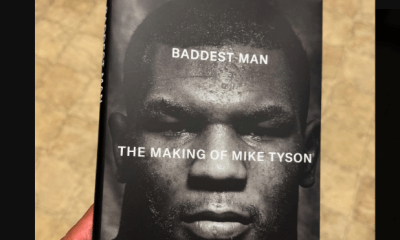
 Book Review4 weeks ago
Book Review4 weeks agoMark Kriegel’s New Book About Mike Tyson is a Must-Read
-
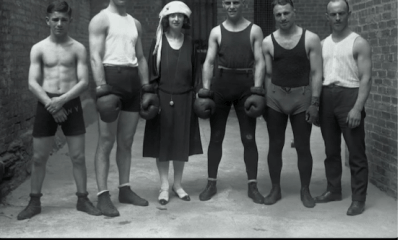
 Featured Articles2 weeks ago
Featured Articles2 weeks agoThe Hauser Report: Debunking Two Myths and Other Notes
-
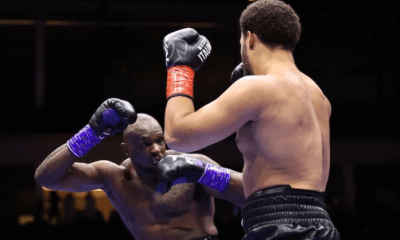
 Featured Articles3 weeks ago
Featured Articles3 weeks agoMoses Itauma Continues his Rapid Rise; Steamrolls Dillian Whyte in Riyadh
-
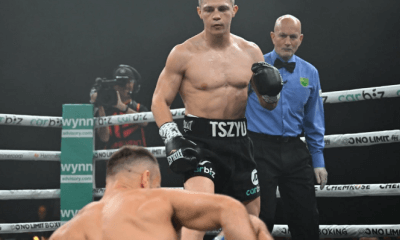
 Featured Articles3 weeks ago
Featured Articles3 weeks agoNikita Tszyu and Australia’s Short-Lived Boxing Renaissance
-
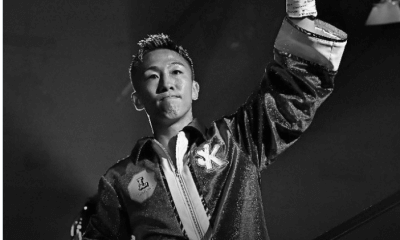
 Featured Articles4 weeks ago
Featured Articles4 weeks agoKotari and Urakawa – Two Fatalities on the Same Card in Japan: Boxing’s Darkest Day
-
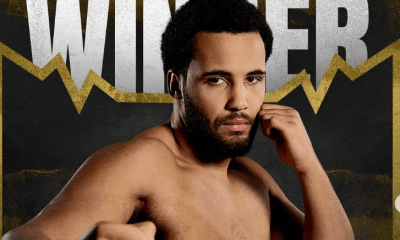
 Featured Articles3 weeks ago
Featured Articles3 weeks agoIs Moses Itauma the Next Mike Tyson?
-
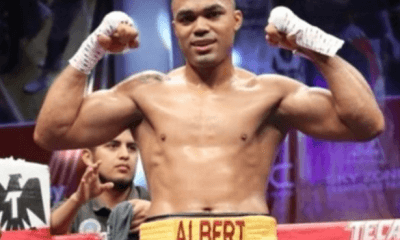
 Featured Articles4 weeks ago
Featured Articles4 weeks agoRamirez and Cuello Score KOs in Libya; Fonseca Upsets Oumiha
-
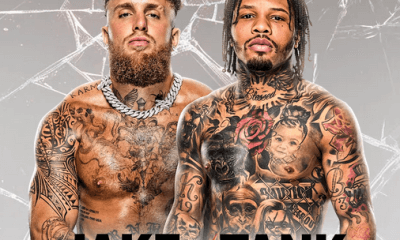
 Featured Articles2 weeks ago
Featured Articles2 weeks agoBoxing Odds and Ends: Paul vs ‘Tank,’ Big Trouble for Marselles Brown and More















